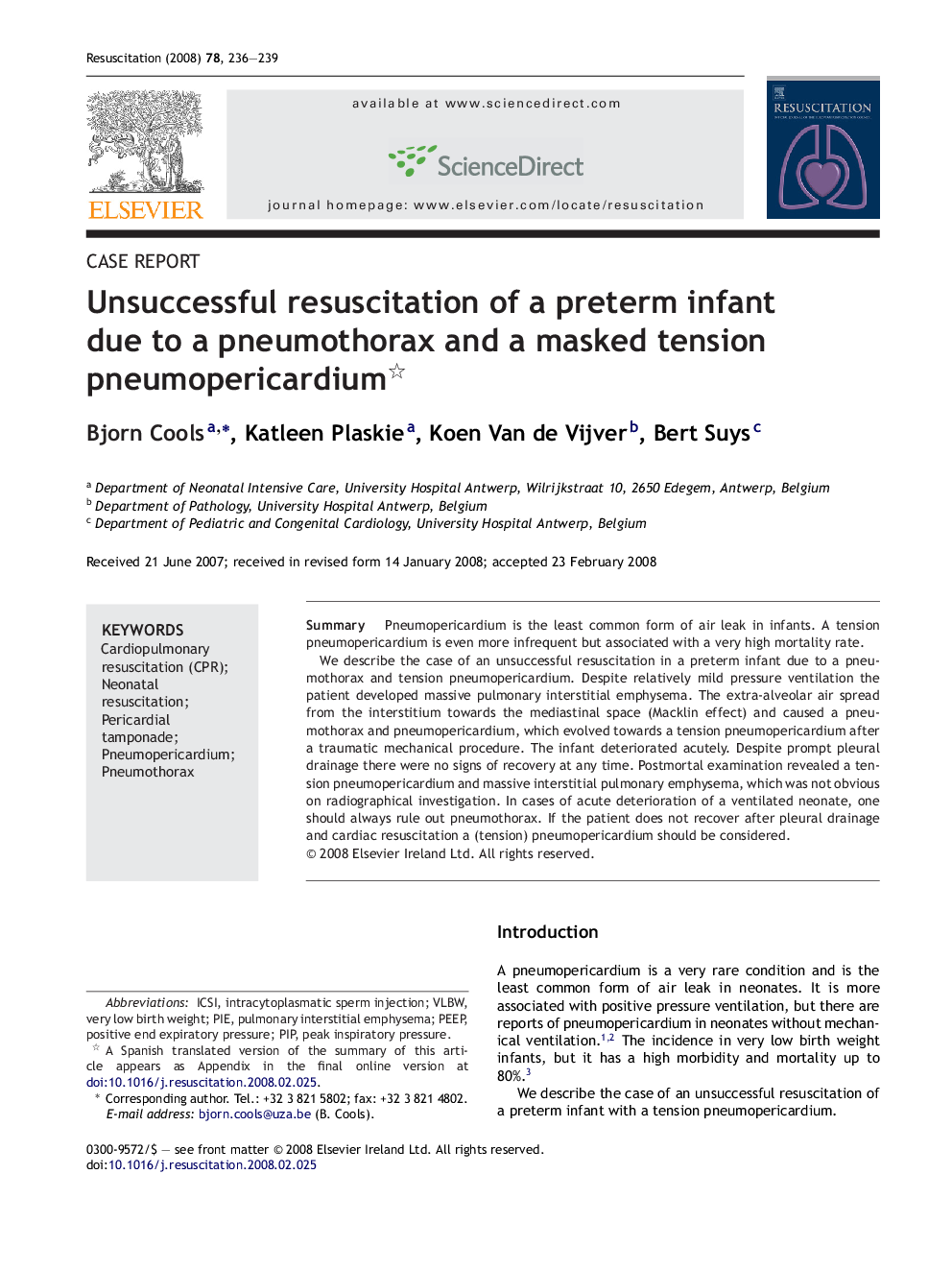| Article ID | Journal | Published Year | Pages | File Type |
|---|---|---|---|---|
| 3009723 | Resuscitation | 2008 | 4 Pages |
SummaryPneumopericardium is the least common form of air leak in infants. A tension pneumopericardium is even more infrequent but associated with a very high mortality rate.We describe the case of an unsuccessful resuscitation in a preterm infant due to a pneumothorax and tension pneumopericardium. Despite relatively mild pressure ventilation the patient developed massive pulmonary interstitial emphysema. The extra-alveolar air spread from the interstitium towards the mediastinal space (Macklin effect) and caused a pneumothorax and pneumopericardium, which evolved towards a tension pneumopericardium after a traumatic mechanical procedure. The infant deteriorated acutely. Despite prompt pleural drainage there were no signs of recovery at any time. Postmortal examination revealed a tension pneumopericardium and massive interstitial pulmonary emphysema, which was not obvious on radiographical investigation. In cases of acute deterioration of a ventilated neonate, one should always rule out pneumothorax. If the patient does not recover after pleural drainage and cardiac resuscitation a (tension) pneumopericardium should be considered.
